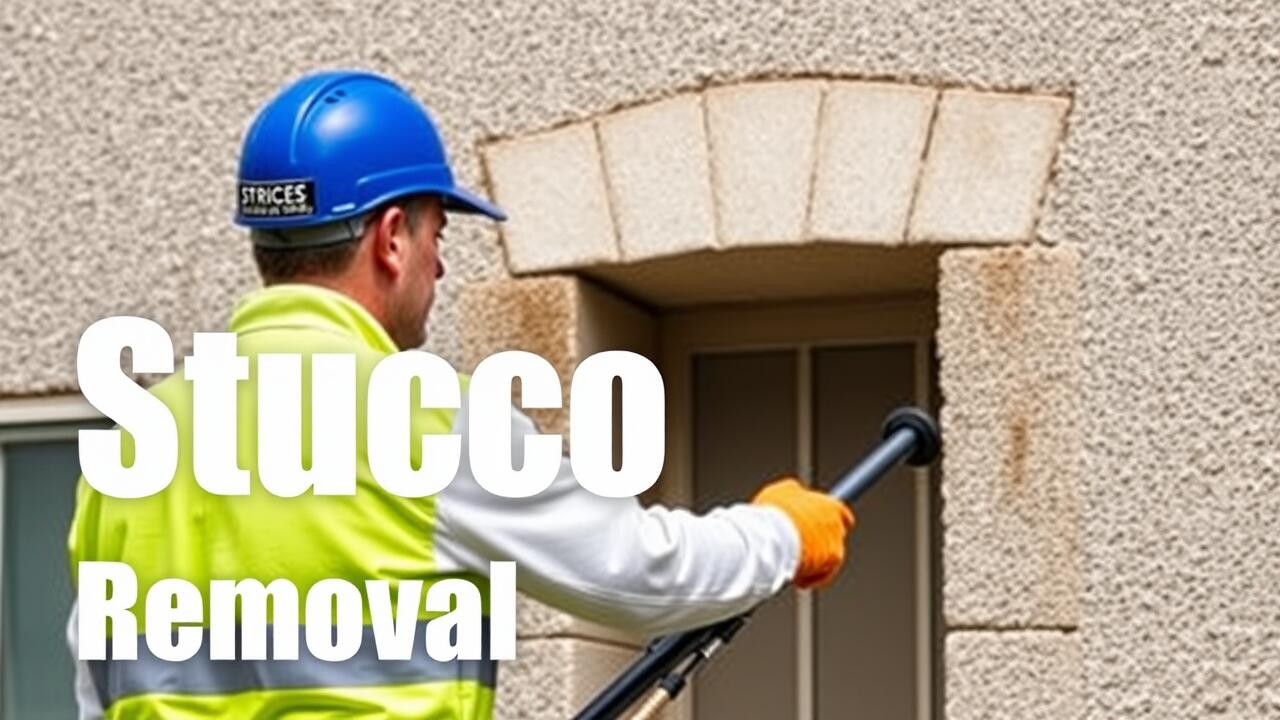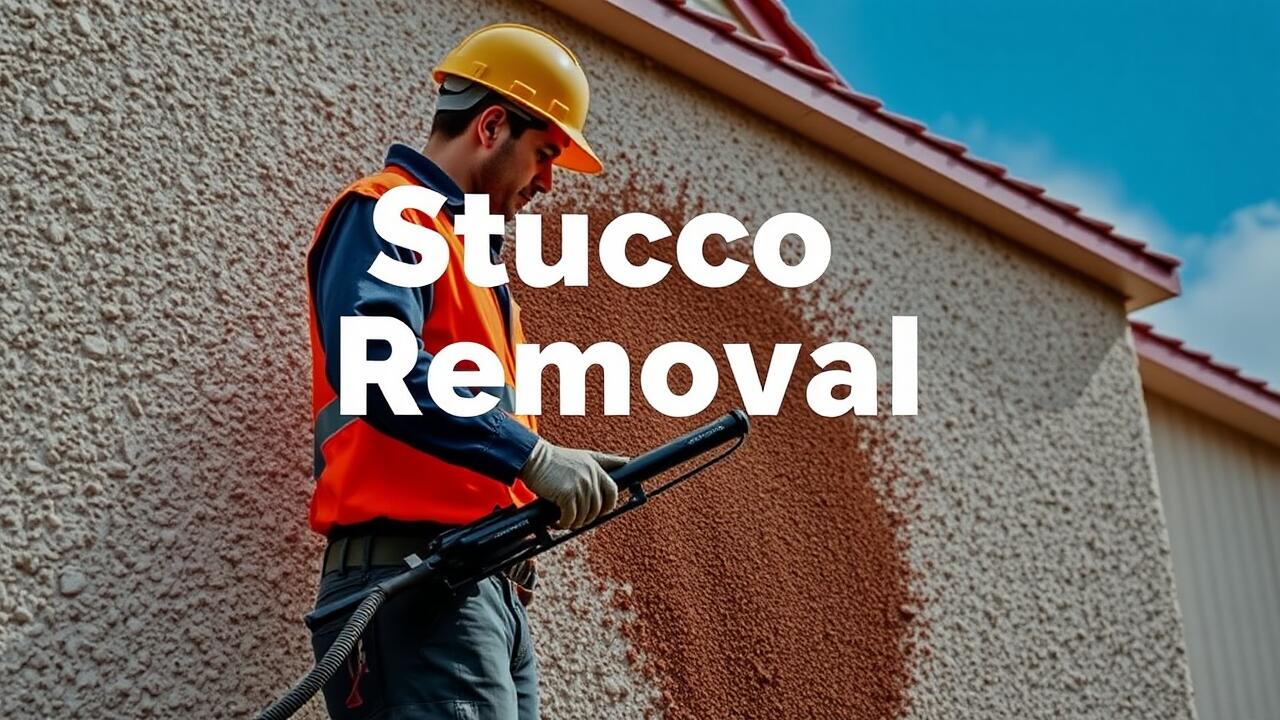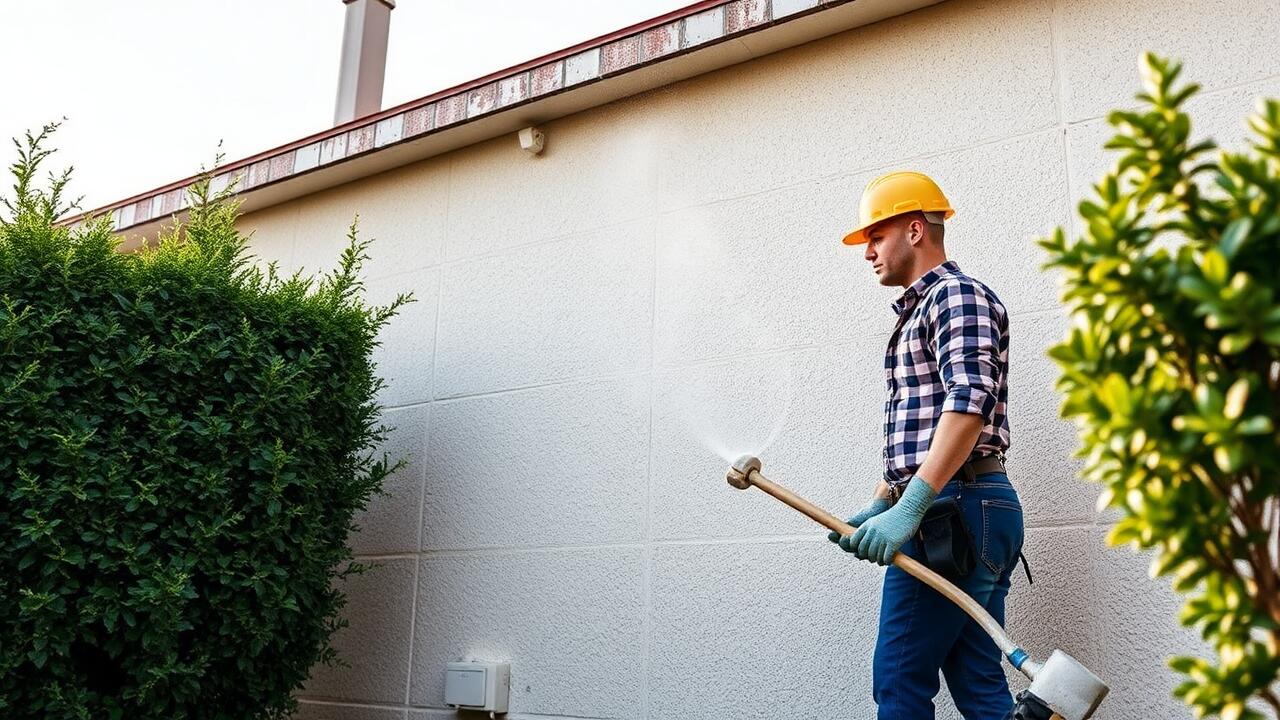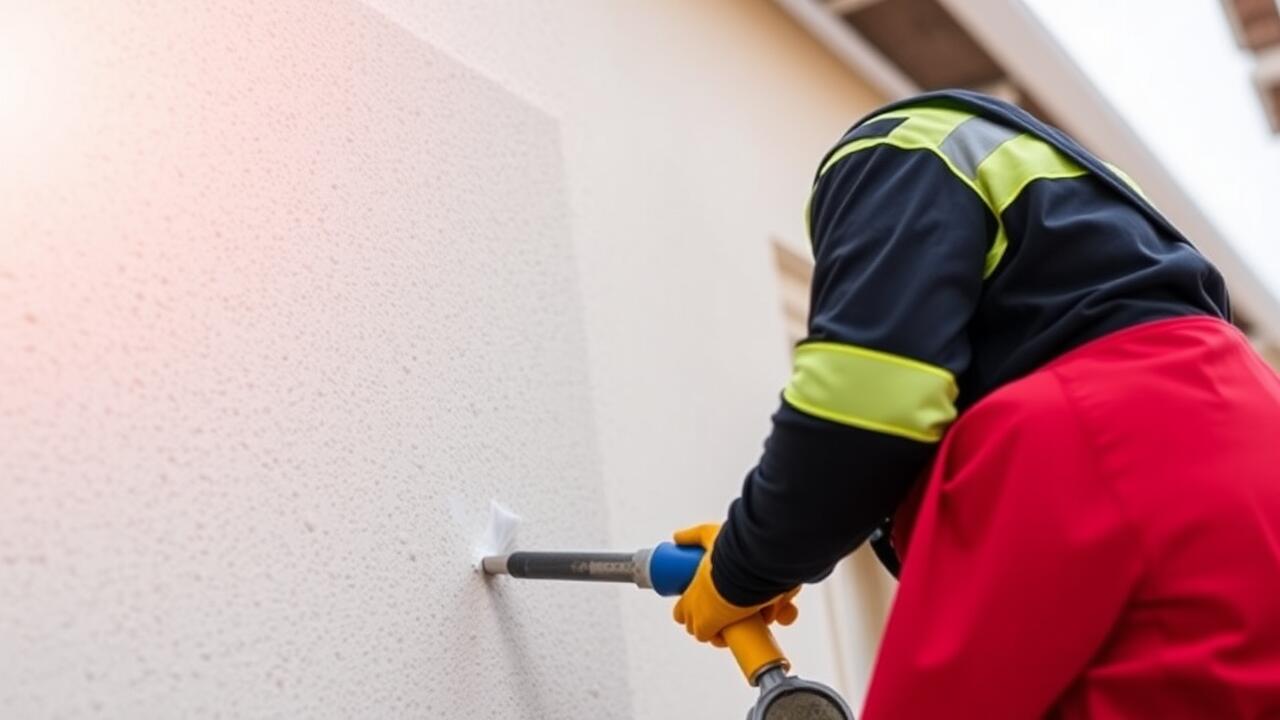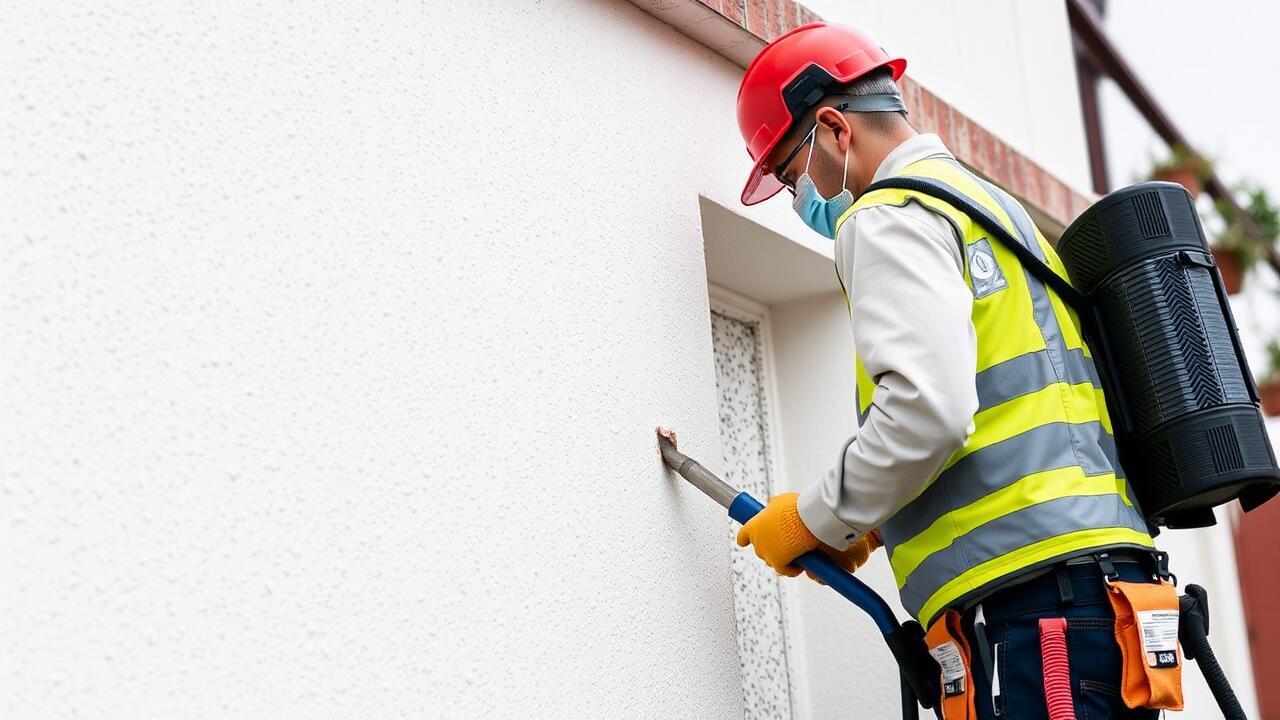
Safety Precautions to Consider
When engaging in stucco removal, safety should always be the top priority. Wearing appropriate personal protective equipment (PPE) is crucial. This includes safety goggles to protect your eyes from debris, heavy-duty gloves to shield your hands, and sturdy footwear to avoid injuries from sharp materials. Ensuring a well-ventilated workspace will minimize inhalation of dust and particles released during the removal process. If you're searching for "Stucco Removal near me," it’s wise to consider whether the professionals follow strict safety protocols to safeguard their crew and your property.
Additionally, it’s important to be mindful of your surroundings and to properly secure your workspace. Remove any obstructions that could cause tripping or accidents. When using air compressors, familiarize yourself with the equipment to prevent mishaps. Ensure that hoses are free of kinks and that connections are secure. Properly handling tools and equipment not only protects you but also assists in achieving an effective stucco removal process. Always communicate with others who may be nearby, ensuring everyone remains aware of the activities taking place.
Essential Gear and Best Practices
When preparing for stucco removal, having the right gear is essential to ensure both efficiency and safety. A high-quality air compressor should be your primary tool, as it provides the necessary power to remove stucco effectively. Look for a compressor that has a good PSI rating, as this will determine its ability to handle tough materials. Additionally, protective eyewear and gloves are crucial to safeguard against flying debris during the removal process. A respirator is recommended to prevent inhalation of dust particles, further enhancing safety.
Incorporating best practices can significantly improve your stucco removal experience. Start by researching “stucco removal near me” to find experienced professionals or rental services for equipment if you prefer to tackle the job yourself. Ensure you familiarize yourself with the equipment before beginning the project; read user manuals and watch instructional videos. This knowledge will support effective operation and maintenance of the air compressor, reducing potential issues during your work. Always work in a well-ventilated area to minimize dust accumulation, which can hinder visibility and create safety hazards.
Maintenance of Air Compressors
Regular maintenance of air compressors is crucial for ensuring they operate efficiently and effectively during tasks like stucco removal. Begin by checking the oil levels if the compressor is oil-lubricated. Low oil can lead to overheating and eventual damage. Additionally, inspect the air filter frequently. A clean filter promotes better airflow and improves performance. Keep the compressor clean from dust and debris, as this can affect its longevity.
Another important aspect is to drain the moisture from the tank regularly. Condensation can accumulate, leading to corrosion over time. Check for any leaks in the hoses and connections, as this can significantly reduce the compressor's efficiency. If you’re considering stucco removal near me, ensuring that your air compressor is well-maintained can make the difference between a smooth job and one filled with challenges. Proper upkeep not only enhances performance but also extends the lifespan of the equipment.
Keeping Your Equipment in Optimal Condition
Regular maintenance is crucial for ensuring that air compressors operate efficiently. Check the oil levels frequently and change the oil as specified by the manufacturer. Clean or replace air filters regularly to prevent dirt and debris from clogging the system. Keeping the compressor in a clean environment also contributes to its longevity. Regularly inspect hoses and connections for wear and tear. These preemptive measures can help avoid costly repairs and downtime during projects like stucco removal.
Using the right pressure settings is essential during stucco removal. Incorrect pressure can damage the underlying structure or create an overly dusty worksite. Familiarize yourself with the specifications provided in the user manual. For those searching for effective services, consider looking up “Stucco Removal near me” to find professionals who can handle these requirements. Ensuring your equipment is well-maintained maximizes performance and keeps tasks running smoothly.
Common Challenges with Stucco Removal
Removing stucco can present various challenges that homeowners must navigate. One of the primary issues is dealing with the material's inherent durability. Stucco is designed to withstand various weather conditions, making it tough to chip away without proper tools. Many homeowners may underestimate how long the process can take, often leading to frustration and a desire to seek professional help for stucco removal near me.
Another challenge often encountered is damage to underlying structures. When stucco is removed hastily, it can inadvertently compromise the exterior walls, exposing them to moisture and potential mold growth. This concern becomes particularly apparent if the stucco has adhered tightly to the underlying surface. Thorough planning and a clear understanding of the removal process are essential to avoid these pitfalls and ensure a successful project.
Troubleshooting Air Compressor Issues
When dealing with air compressor issues during stucco removal, it is essential to identify common problems that may arise. Low pressure is a frequent issue that can hinder your efficiency. Check for leaks in the hoses and connections, as even small leaks can significantly impact performance. Additionally, ensure that the air filter is clean and free from obstructions. If the compressor fails to start, inspect the power supply and the motor for any signs of damage.
Another aspect to consider is the noise level produced by the air compressor. Unusual sounds may indicate mechanical problems needing immediate attention. If you encounter persistent delays in air supply, ensure that you're not overloading the compressor beyond its capacity. Proper troubleshooting can save time and prevent further disruptions in your stucco removal process, often leading to the search for "Stucco Removal near me" for professional assistance.
FAQS
What type of air compressor is best for stucco removal?
A portable, high-CFM (cubic feet per minute) air compressor is typically best for stucco removal, as it provides the necessary power and airflow to effectively strip away stucco materials.
Are there any specific safety precautions I should take when using an air compressor for stucco removal?
Yes, it is crucial to wear safety goggles, gloves, and a dust mask to protect yourself from debris. Additionally, ensure the work area is well-ventilated and keep bystanders at a safe distance.
How do I maintain my air compressor to ensure optimal performance during stucco removal?
Regularly check and change the oil, clean the air filter, inspect hoses for damage, and ensure all connections are secure. It's also important to drain moisture from the tank to prevent rust.
What common challenges might I face when removing stucco with an air compressor?
You may encounter issues such as inadequate pressure, clogging of the nozzle, and difficulty in reaching tight spaces. Troubleshooting these issues can often involve adjusting settings or cleaning equipment.
Can I use a standard air compressor for stucco removal, or do I need a specialized one?
While a standard air compressor may work for minor stucco removal, a specialized compressor with higher pressure and airflow capabilities is recommended for larger or more stubborn areas.
